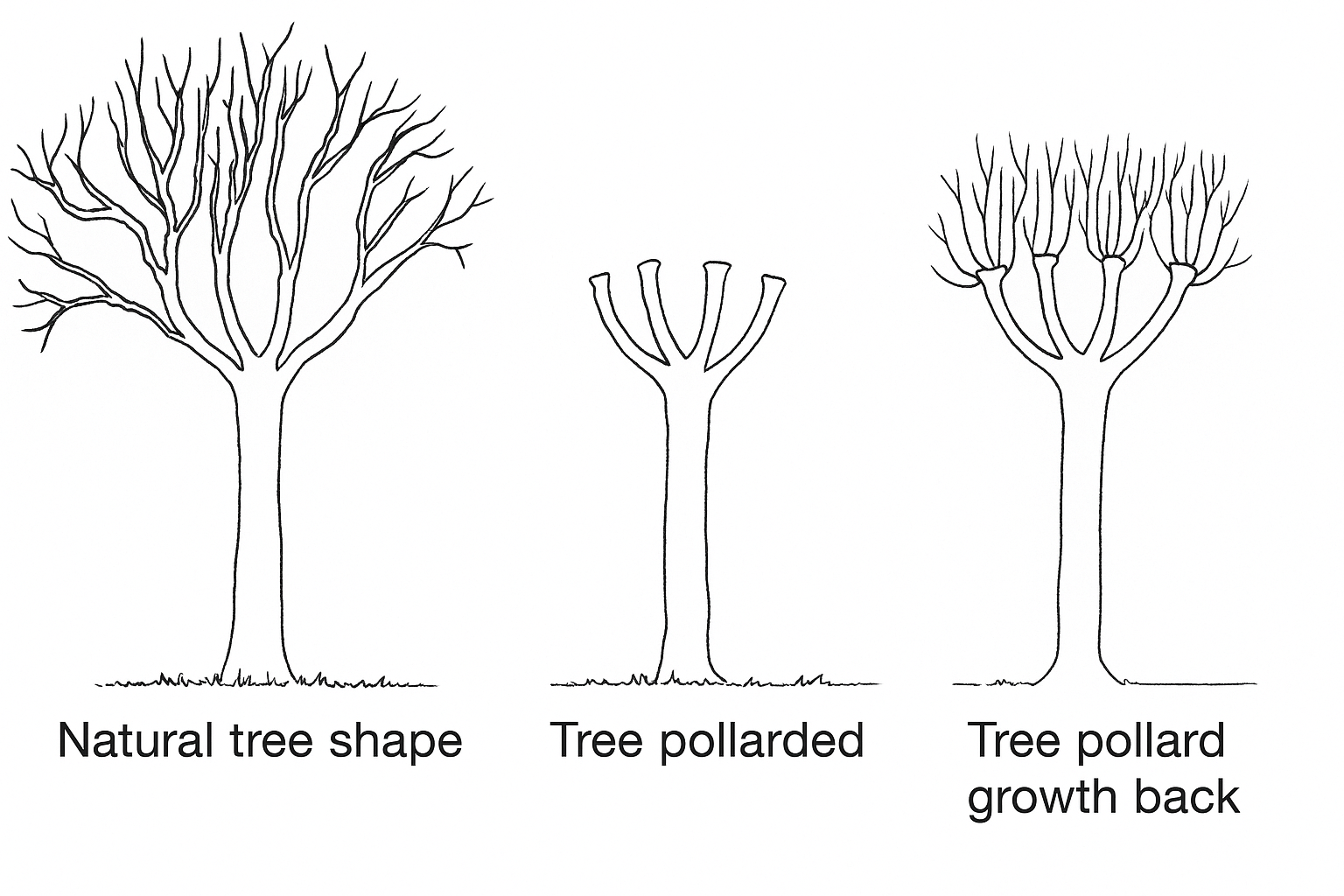Did the council follow the correct process to name Herzog Park back in 1995?
Or has Rathgar been living with Orwell Quarry Park all this time?
The council plans to pilot “pollarding” 250 hornbeams across the city, said the city tree officer at a recent meeting.

Many of the tall hornbeam trees that dot the streets of Maryland have already been cut back. The thick canopies look cinched where space has been made for overhead wires to pass.
The challenge is that fastigiate hornbeams were supposed to be narrow, said Ludovic Beaumont, the Dublin City Council official in charge of street-tree maintenance, at a meeting last week.
That’s why the species was planted all over the city 20 or 30 years ago, he said. But as they mature, they bulk out.
And the dense canopy can be oppressive for residents, he said at a meeting of the South Central Area Committee.
So, the council is planning to do much more to shape them – to pilot a method of managing the trees known as “pollarding”, said Beaumont. It’s a kind of extra-vigorous pruning.
They plan to start with 250 fastigiate hornbeams across the city, he said, and see how it goes.
“That’s interesting,” said Darragh Moriarty, the Labour councillor, at the area meeting.
Councillors have been calling for new ways to manage trees, to enable more on the city’s streets while avoiding complaints about blocked windows or damaged infrastructure.
Said Moriarty at the meeting: “Anyone who lives with a tree right outside wants it gone. And, any area that doesn’t have enough trees wants more trees.”
When arborists inspect trees for the council, they’ve mostly been looking just at the health of the tree, said Beaumont at the meeting.
“But what we have realised as well, we have some trees that while they are in good condition, they are creating a lot of issues to the resident,” he said.
Fastigiate hornbeams can be a problem in particular, once they mature.
“This tree species can become overwhelming, dominating both the available space and nearby houses,” says a briefing to councillors. Also, it can struggle to thrive in small spaces and damage pavements and utilities.
They could look at removing trees and replanting a different type, he said. “But it is very difficult to replant.”
After a tree is felled, it can take three to five years for its roots to die off – which needs to happen before they can replant, he says.
“And sometimes we cannot plant in the same location as there are more pipes under the footpath,” said Beaumont.
So they plan to pilot this method called “pollarding” which is used in many other European countries, he said, including Belgium, France and Germany.
“Basically we are going to reduce, drastically, the size of the trees,” he said, “and leave it as a relatively small tree.”

The method doesn’t work with all species, he said. Hornbeams are strong, though.
“I’m quite confident that they’re going to recover from it,” said Beaumont. He already tested it out on one tree in the city, and it grew back well, he said.
Green Party Councillor Michael Pidgeon said he knows, from seeing the approach in other European countries, that this procedure does put trees under stress. “I know it can be quite tough on some of the trees. Not all of them will make it.”
And, within the South Central Area, it looks as if most of the trees are all in one estate, Maryland, he said. If they die off, will the area be marked for priority replanting?
Beaumont nodded.
“Right, I got a nod there. I’ll take that,” said Pidgeon.
For Emer Bennett, the issue with the hornbeams on her street is the sticky residue they can drop, she said on a blustery Tuesday afternoon.
“We’re only after scraping it off the wall now,” she says, gesturing to the low brick boundary around the front yard of a pebbledash terraced house on Our Lady’s Road in Maryland.
That residue gets on cars too, says Lisa Jane Roe, who is standing beside her.
Two big hornbeam trees are planted in tarmac bases in the footpath on the other side of the yard gate.
The written briefing to area councillors said that 16 trees on Our Lady’s Road would be cut back as part of the pollarding pilot. It doesn’t map exactly which ones.
A bit of work to make them smaller would be welcome, says Bennett. To manage them a little better, she says – although she doesn’t know exactly what “pollarding” means.
And, says Roe, she does appreciate the trees. “I do like them.” She looks up at the thick dark leaves.
Yes, says Bennett. They can sometimes block light into her backyard, she says, but “you can’t cut them down for that”.
At the council meeting, independent Councillor Vincent Jackson said he welcomed figures that show a net increase in trees in the South Central Area.
But he still wants to see more ambition, he said. “I genuinely thought we should be looking for thousands of extra trees to be planted where appropriate in the city.”
Beaumont, the council official, said planting isn’t hard but helping them survive long-term can be.
The council has to make sure the tree will last, and deal with competition under the footpath for space for pipes, ducts and services, he said. “It’s very difficult to plant trees without impacting those services.”